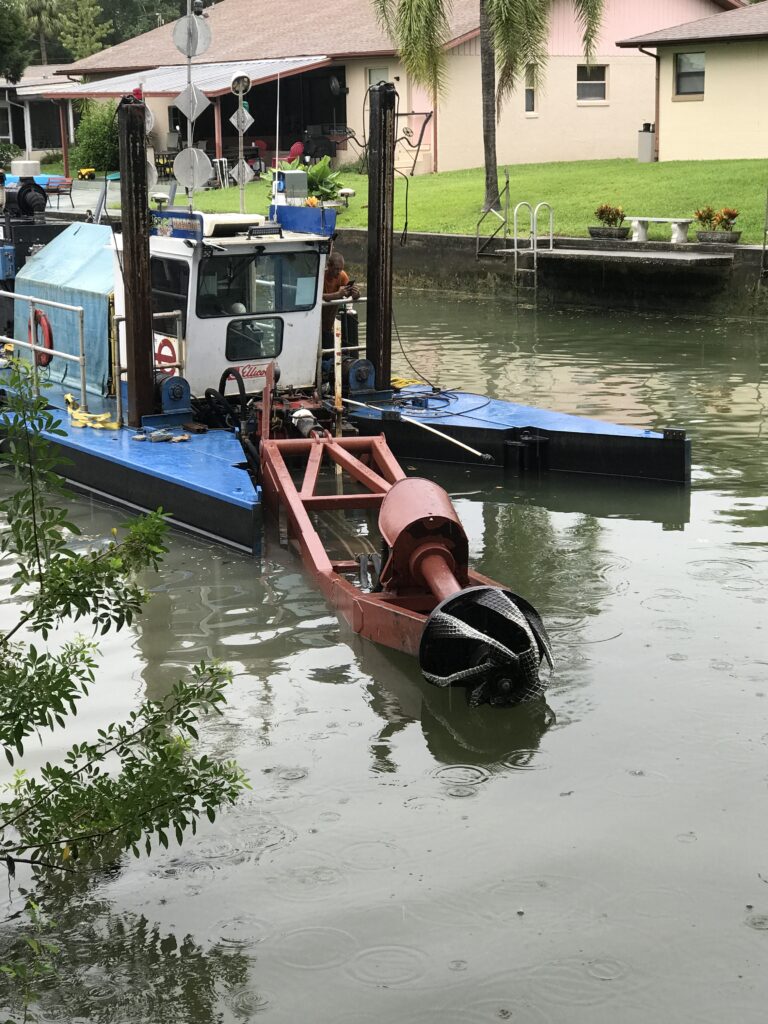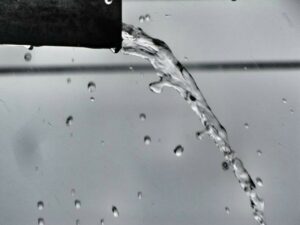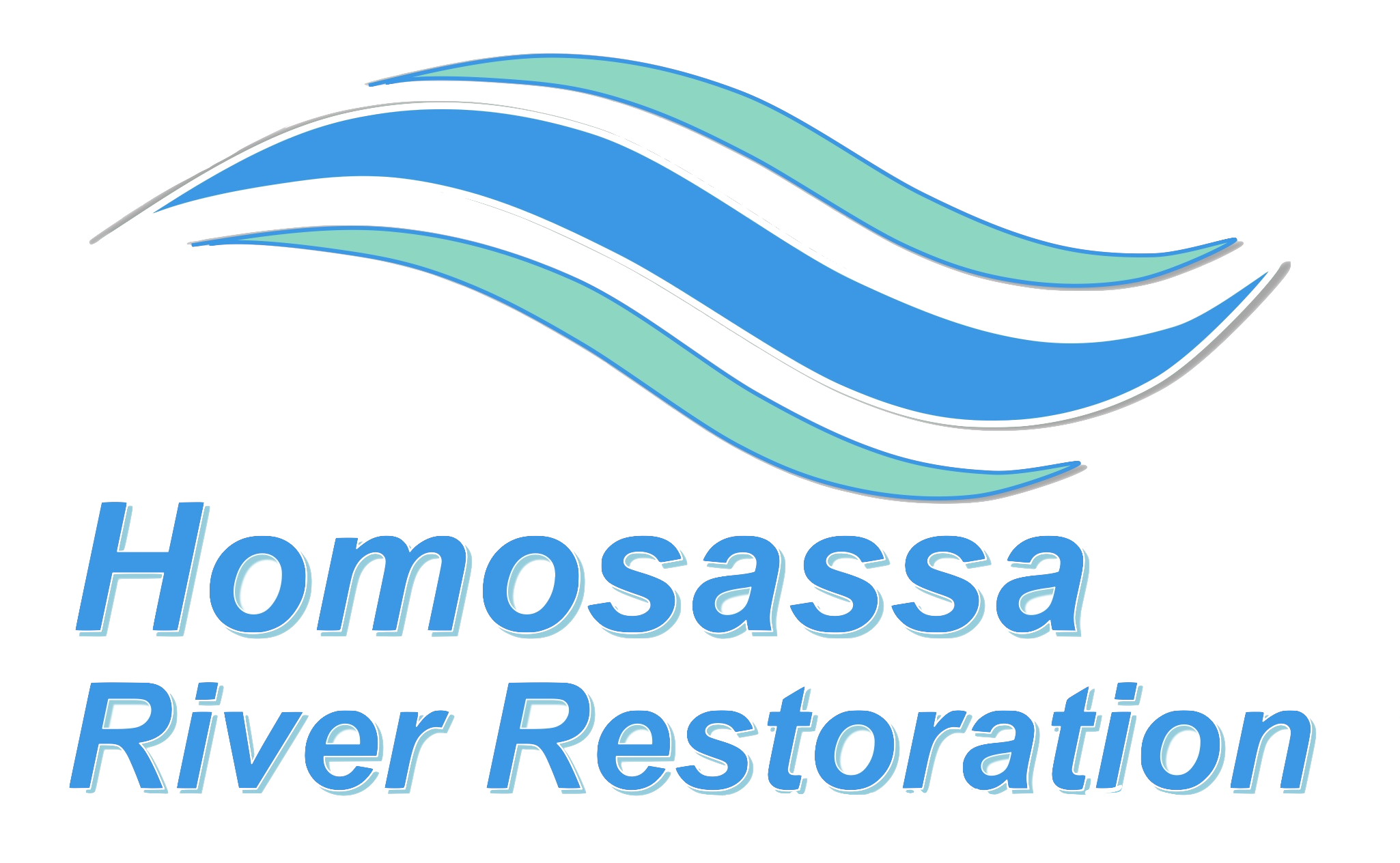DEEP De-Watering
We Start with Water

De-watering basics
We move millions of gallons of water when doing restoration work. Water brings the Lyngbya, organic muck, and small waste objects (like bottle caps and scallop shells) to our site. Each of our industrial grade pumps pull about 1100 gallons a minute of combined water and detritus (goo, from the river bottom). Our 8 inch water main sized pipes are like a bundle of fire hoses.
 To get the Lyngbya out, takes water. And what we put back in the river, is, also water. Pure clean water. Water like you might find in a public water system, minus the chlorine or sterilizers a municipal water system would likely add.
To get the Lyngbya out, takes water. And what we put back in the river, is, also water. Pure clean water. Water like you might find in a public water system, minus the chlorine or sterilizers a municipal water system would likely add.
Three Steps to Clean Water
First, we pull our the big stuff. When it reaches our site, the water goes through a screen that separates bits of tree roots, sunglasses, cellphones, and unwanted salt water shells (those don’t dissolve in fresh water) from the liquid. This industrial grate is cleaned off regularly, or like a storm drain, because it would become blocked otherwise.
We direct the water (still full of organic bits but free of big pieces) into a settlement tank where sand and heavy particles fall to the bottom. Sand that falls to the bottom of this tank is recycled.
Next we introduce an organic polymer into the water. Chemically speaking polymers are long chains of monomers. A monomer is an organic molecule in its simplest form. Monomers link together to become polymers. Glucose is a monomer, and starches are long chains of linked glucose, or polymers. Find a more detailed explanation of monomers and polymers here.
Polymers cause the fine cells of Lyngbya and other small particles to stick to long polymer chains and form larger particles called “flocs”.

It doesn’t take a lot of polymer to do this job. Just a fraction of a percent of polymer added to cloudy water will cause the particles in the water to floc, and stick together.
It’s in the bag
Now that the polymers are flocing with bits of organic muck, we remove them both from the water. We pump them into massive filter bags that are 100 feet long, 30 feet wide, and 7 feet high. These incredibly large bags are made of many layers of dual filament polypropylene, a strong porous material. Water goes through it, but floc will not. It is too large to pass through the bag. We fill the bags, then vibrate them. Water flows out. Floc stays in.
We create a shallow canal (more like a trench) around the bags. Water flows out of the bags, and into the trench. The trench leads downhill to a settlement pond, where the water can drop any new particles it picked up in the trench.
That water is clean water. Over 99.5% of the original phosphate and nitrate mass that we pumped out of the canal is removed. From there we return the clean water, free of organics and nutrients, back to the river. We pump out clean water at a very high rate when our process is in full operation.
Putting muck to good use
Silt, bits of decayed plants, and algae fill up the bags. We wait until the bags fill with this by-product, getting the most we can out of every bag. Each bag can hold 700 cubic yards of organic material. Once the bags can’t take any more floc, we stop filling them with water, and let the remaining water filter out.
We put the leftovers to good use. The silt rich goo has many of the elements that farmers use to enrich their fields. And the organic elements help the sandy Florida soils hold those nutrients. Most of what we remove from our de-watering plant ends up on local farms or nurseries where it reduces the need for fertilizer, enhances the soil, and creates a second benefit for the clean up.
We produce water that could easily go into a city water system, where they would sterilize it. Our de-watering site is a water treatment plant.


